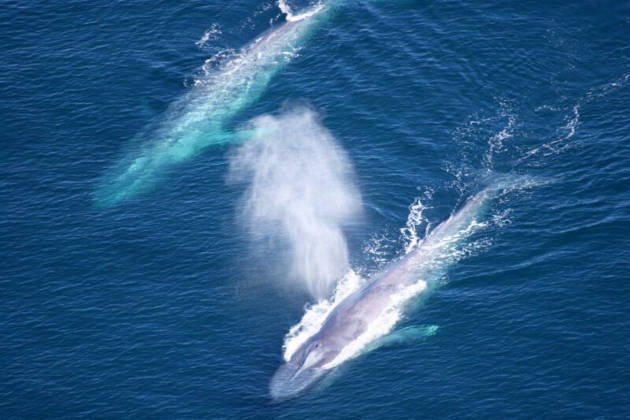Protecting Blue Whales and Blue Skies: 2024 Mid-Season Report on Vessel Speed Reduction Efforts
The Protecting Blue Whales and Blue Skies program, aimed at reducing vessel speeds for the safety of whales and improving air quality, has released its mid-season report for 2024. This season, which runs from May to December, has seen the highest participation in the program’s history, with 37 shipping companies enrolled, 14 of which have achieved the top recognition level.
For over a decade, the program has encouraged shipping lines to voluntarily adjust their schedules to travel at 10 knots or fewer in critical areas during peak whale activity and high ground-level ozone conditions.
Mid-Season Evaluation
Twice a year, data from participating shipping companies are assessed based on their vessels’ distance traveled at whale-safe speeds within designated Voluntary Speed Reduction (VSR) zones.
The Challenge
Ship traffic poses a significant threat to whales, with an estimated 80 whale fatalities per year due to ship strikes along the US West Coast. The increasing volume of commercial shipping has led to heightened ocean noise, overshadowing natural sounds.
Program Insights
Jess Morten, Director of Marine Resource Protection for the California Marine Sanctuary Foundation, expressed optimism about the program’s growth and the ongoing collaboration of shipping lines.

Source: NOAA
Tim Mitro, an Air Quality Engineer, highlighted that program participants currently account for 89 % of container and auto carrier traffic in the VSR zones, although participation among bulk and tanker vessels remains lower at 17 %.
Performance Statistics:
- 37 shipping lines enrolled, the largest number ever.
- 14 lines achieved the Sapphire award level (85-100 % of distance traveled in VSR zones at 10 knots or fewer).
- 11 lines reached the Gold award level.
- Participating vessels have traveled over 220 000 nautical miles, with 82 % at or below the target speed.
The Sapphire tier includes major companies such as CMA CGM, MSC, and Yang Ming.
Monitoring Methodology
The program utilizes the Automatic Identification System (AIS) for tracking vessels’ speeds and locations, enabling verification of performance on specific transits.

Monthly reports are provided to each shipping line to enhance accountability and visibility.
About the Initiative
The program addresses the global threat of ship strikes to whales, particularly endangered species in California waters. It supports requests from NOAA, the US Coast Guard, and the EPA for vessels to reduce speeds during critical periods to safeguard whales.
Collaborating Organizations
The program is a joint effort among various organizations, including the California Marine Sanctuary Foundation, local air pollution control districts, and marine sanctuaries, alongside academic and environmental institutions.

